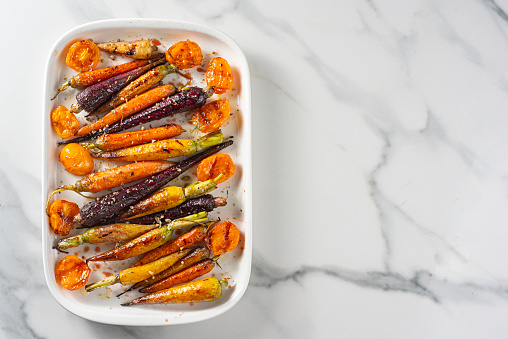In recent years, many of us have turned to strong skincare products such as retinoids to deal with dry skin and fine lines. But given the risk of inflammation, is there a better, more holistic way of boosting skin collagen?
Gwyneth, Reese and Selena all rave about it, and retinol has become a skincare staple essential to your nighttime routine. From soothing summer-induced pigmentation to reviving a lost glow, this little serum is said to offer a host of skin benefits.
But if there’s one thing we’ve learned lately, it’s that not all complexions – especially winter-dry skin – can handle its strong formulation.
Irritation, inflammation and hyper-pigmentation are some of the side effects that can come with using various retinoids. Dr Hayley Leeman, dermatologist at the Cadogan Clinic tells Stylist: “Not every skin tolerates retinoids in the same way. There are a lot of factors to consider, including seasonal changes and your skin type.
“The extreme cold, indoor heating and wind that come with winter can dry and irritate the skin. And if you’re prone to irritation, retinoids can exacerbate it.”
You may also like
Retinol in skincare: from benefits to best retinol products, here’s everything you need to know
While oily skin tends to have a better tolerance for active acids like retinoids, dry and sensitive skin should be wary when using such a concentrated product. Additionally, Dr Leeman points out, “People with a darker complexion are also at risk with post-inflammatory hyper-pigmentation if retinoids induce too much irritation.”
She warns that “caution is key when using this product”, advising that it’s really best used under the supervision of a consultant dermatologist.

While you might be tempted to splurge on a bunch of retinoids for their smoothing and reviving benefits, you’ve got to weigh up the positives with the risks of over-exfoliation and irritation.
So, what’s the alternative?
Retinoids are simply vitamin A, which you can get via food
You may also like
Gut-skin axis: an expert explains how gut health can impact the skin
There are two types of vitamin A that you should know about: preformed and provitamin A.
“Preformed comes from animal food in the form of retinoid acids, which can be consumed through meat, egg, fish or cod liver oil. Provitamin A derives from plant-based food, such as sweet potatoes or carrots, in the form of carotenoids,” explains registered nutritionist Emilia Papadopoullos.
“Vitamin A through food is very important for skin healing, as it helps modulate the immune system and reduce inflammation. It also comes with a lot of antioxidants that target free radicals and protect the skin from damage, which is why it’s an essential vitamin to have in your diet.”

Overall, eating retinoids through preformed vitamin A via food is a gentle and safe option to boost any skin type without triggering inflammation. That said, just as each skin reacts to retinoids differently, the gut can also dictate how your body absorbs vitamin A.
“Gut issues and other genetic predispositions can impact vitamin A absorption. Additionally, solely focusing on provitamin A from plant food also means your body has to do extra efforts to convert carotenoids into vitamin A,” adds Papadopoullos.
For that reason, she recommends enhancing absorption by consuming unsaturated fatty foods (such as oily fish and nuts) and focusing on preformed vitamin A that is easy to digest, such as supplement powder and cod liver oil.
The recommended intake of vitamin A for women is about 600 micrograms per day; a single raw carrot contains enough to meet the recommended daily allowance (RDA). One whole baked sweet potato gives you five times the RDA, while a slice of pumpkin pie also gets you over the line.
Should you stop using topical retinol?
Not so fast – there definitely are benefits to using these products. Rebecca Elsdon, leading skincare expert and facialist at RE skin clinic explains: “Retinoids are great for reversing some of the damage from summer. It’s a targeted solution that can help reduce pigmentation, boost skin hydration, and support cellular turnover.”
But taking your skin type into consideration is essential before getting started with retinoids. “With oily skin, retinoids can help balance the overproduction of sebum, while for dry or sensitive skin, they can increase the lipid barrier (the skin’s natural fats) in the skin. Overall, this type of active acid can be used to balance things out.”
While whole foods are great (carrots contain fibre and a host of other vitamins and minerals besides vitamin A, for example), topical retinoids are perhaps an arguably easier route to take. Your body doesn’t have to work so hard to absorb the vitamin and you have more control over the dosage.
To get the most out of your food, you’ve got to factor in two things: food pairing and gut health. While consuming vitamin A will benefit your overall health and therefor your skin, thanks to the antioxidants it provides, you may not achieve the retinol glow you’d get from a serum through diet alone.
How to make retinoids work for you
There are different forms and percentages of retinoids that can be adapted to your skin’s needs. One you can easily find over the counter is retinol, a weaker version of retinoids that can be more gentle on the skin. However, it isn’t used by professionals as its formulation may not be strong enough to bind to the receptors and provide benefits.
Studies have shown that retinoid acids dosed at 0.03% or higher are the best formulation for visible results, and in the UK, the good stuff is prescribed by dermatologists with a treatment plan adapted to your skin’s needs.
“Not all skin can tolerate a high dosage, but there’s a way around it,” says Dr Leeman. “I often start my clients on a lower strength or frequency of application and build up their usage as the skin’s tolerance increases. For dry and sensitive skin, this may mean applying retinoid acid twice a week to start with and then gradually increasing to every night.
“Oily skin may easily tolerate daily application of high strength retinoic acid such as tretinoin 0.05%, however, I have also seen some patients apply their retinoids two to three times a day, which isn’t recommended as it will only increase the risks of irritation with no added benefit.”
Overall, gradually building your application to once nightly is ideal, and there’s always the option to dilute your retinoids with a moisturiser to minimise dryness if necessary.
You may also like
Retinoid dermatitis is a possible side effect of over the counter retinoids: here’s what a dermatologist wants you to know
Fundamentally, to get the very best results, you want to be looking at your diet first, and then supplementing with topical application. You need retinoid help from both sources, and the challenge is working out the right balance. Eating more vitamin A-rich foods is a safe and healthy way of boosting skin health (just so long as you don’t become addicted to carrots or decide to try polar bear liver – it’s rare but you can overdose on vitamin A), while skincare, if managed properly, can really help to give your skin a boost.
Images: Getty
Source: Read Full Article
